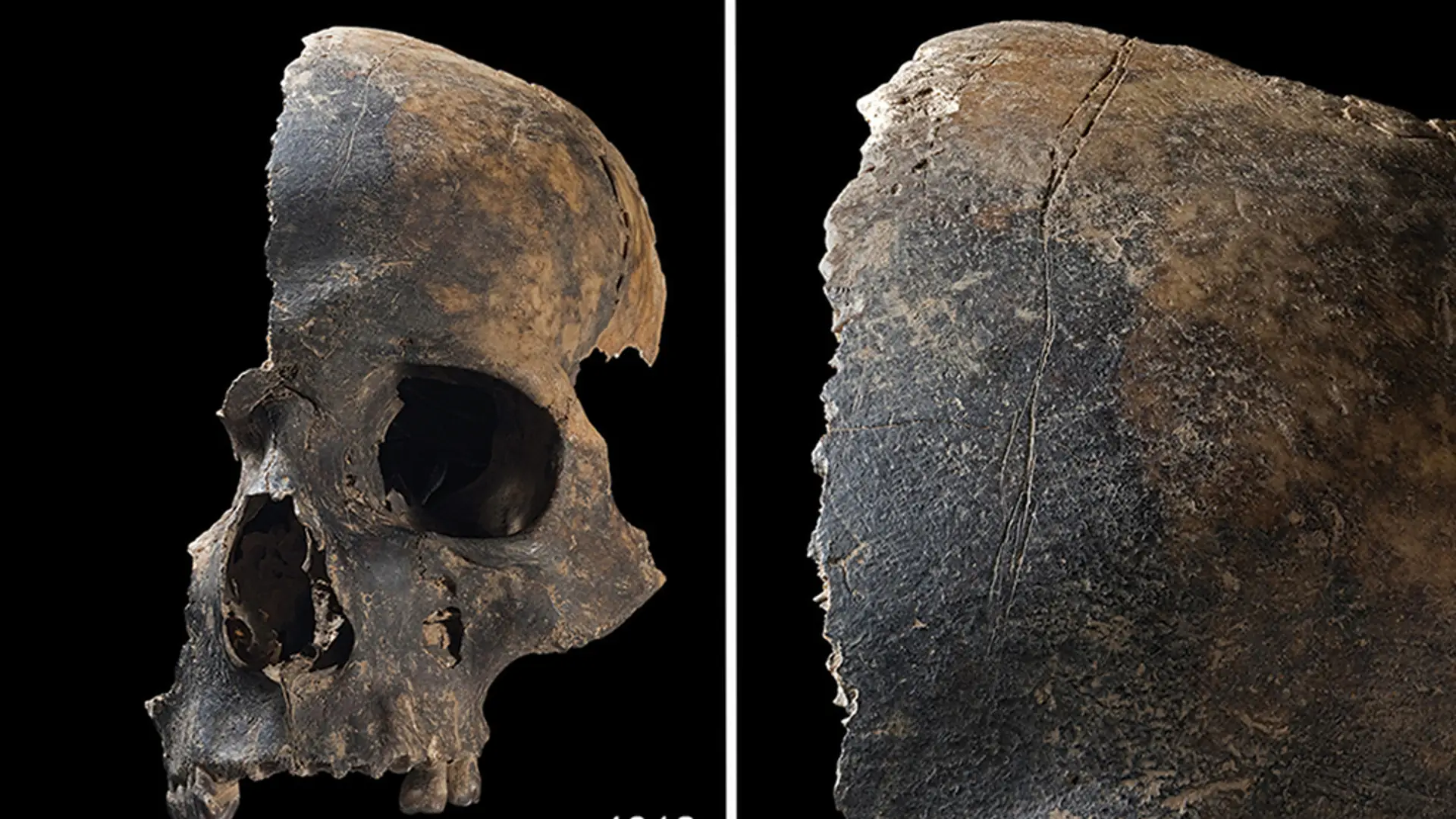A gruesome discovery of 4,000-year-old human remains in Bronze Age Britain has revealed evidence of extreme violence, including tongue removal, cannibalism, and evisceration. The findings offer a chilling glimpse into ancient ritualistic practices and interpersonal conflicts.
Key Points at a Glance:
- Archaeologists uncovered 4,000-year-old bones with signs of brutal violence in Bronze Age Britain.
- Evidence suggests victims were subjected to tongue removal, evisceration, and possibly cannibalism.
- The findings, described as “unprecedented,” highlight extreme rituals or violent interpersonal behavior.
- Researchers identified cut marks consistent with deliberate mutilation, including dismemberment.
- The discovery sheds new light on the social and ritualistic dynamics of ancient British communities.
Gruesome Evidence Unearthed
The shocking discovery was made in a Bronze Age site where skeletal remains showed deliberate and violent treatment. Scientists examining the bones observed deep cut marks on the jaws, skulls, and rib cages, suggesting that the individuals underwent post-mortem mutilation.
One of the most striking aspects was evidence of tongue removal. Experts identified cut marks on the underside of mandibles—consistent with incisions made to sever the tongue. While the exact reasons remain unknown, researchers speculate it could have been symbolic punishment or a ritual act.
Additionally, signs of evisceration (removal of internal organs) were observed in several remains, alongside cut marks that indicate possible dismemberment. Some bones also showed patterns suggesting cannibalism, such as burn marks and signs of marrow extraction.
Ritualistic Practices or Acts of Violence?
The unprecedented brutality revealed in these remains raises questions about the cultural and social norms of Bronze Age Britain. Archaeologists propose two possible explanations:
- Ritualistic Mutilation: The removal of tongues, organs, and the burning of bones might have had ceremonial or symbolic significance. Similar practices have been documented in other ancient societies, where such acts were believed to honor the dead, appease gods, or curse enemies.
- Interpersonal Violence: The remains might reflect brutal conflict, punishment, or revenge. Deliberate mutilation could have been a way to shame or degrade victims, either during or after death.
Researchers emphasize that while the evidence is gruesome, it sheds light on the complex and often violent rituals that shaped Bronze Age cultural identity.
Signs of Cannibalism
The discovery also points to potential cannibalistic practices, a topic that continues to intrigue archaeologists. Burned bones and cut marks on skeletal remains indicate that body parts may have been roasted or broken open to extract marrow—a common feature in prehistoric cannibalism.
Cannibalism in ancient societies can stem from various reasons, such as survival, warfare, or ritualistic behavior. In this case, the evidence suggests it may have been part of a larger cultural practice rather than an act of desperation.
Implications for Understanding Bronze Age Britain
This discovery challenges conventional views of life and death in Bronze Age Britain. The findings suggest a society where violence, ritual, and death were intertwined in ways that are both fascinating and unsettling.
Key insights include:
- The role of ritualistic violence in shaping community identity and belief systems.
- Evidence of interpersonal conflict and its brutal consequences.
- The potential for symbolic mutilation to serve as a form of punishment or social control.
A Window Into Ancient Societies
The 4,000-year-old bones tell a disturbing yet crucial story about the lives and practices of ancient Britons. By analyzing the remains, researchers gain valuable clues into the social dynamics, beliefs, and conflicts that defined Bronze Age communities.
The findings also remind us that violence and ritual are not new phenomena but have been part of human history for millennia.
What drove Bronze Age people to such extreme acts? Were these rituals meant to honor, punish, or instill fear? The bones may hold the answers—but many mysteries remain.
